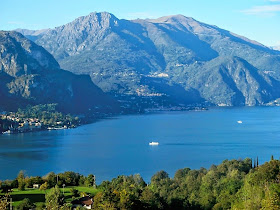It's hard to easily convey the terroir
of Italy or any particular country since there are so
many elements that make up the terroir of a specific territory
nevermind the whole country.
What is terroir?
Terroir is everything in the natural environment where vineyards are located and where wine is produced. It includes everything from the different climates, soils and topography. Some major factors affecting the wine regions throughout Italy are the lakes (i.e. Lake Garda, Lake Iseo), the mountains (the Alps to the north and the Apennines that run the whole country of Italy), soils (morainic glacial soil and volcanic soil especially in the south), oceans and seas (Tyrhennian, Adriatic and Ionian) the topography (plains, hills and mountains) and the climate that varies consistently throughout.
All these different elements take part in
affecting the wines produced in every wine region and it's all in
how the winemakers manage and deal with these elements
that affect the outcome of the grapes and ultimately the wine that is
produced. By understanding each individual terroir of a particular wine
region the winemaker can judge which grapes would grow best and
succeed or that will show a true expression of the grape or even a
unique quality. These decisions are what can make one wine stand out
from another. You can have one terroir, but have
multiple winemakers make different wines based off of that one
terroir due to their evaluations and choices made in not only the vineyard itself, but during the winemaking process itself.
What is terroir?
Terroir is everything in the natural environment where vineyards are located and where wine is produced. It includes everything from the different climates, soils and topography. Some major factors affecting the wine regions throughout Italy are the lakes (i.e. Lake Garda, Lake Iseo), the mountains (the Alps to the north and the Apennines that run the whole country of Italy), soils (morainic glacial soil and volcanic soil especially in the south), oceans and seas (Tyrhennian, Adriatic and Ionian) the topography (plains, hills and mountains) and the climate that varies consistently throughout.
 |
| Lake Como |
 |
| Valle d'Aosta |
I could go on and on about local specialties, wine pairings, and how one grape in one region greatly differs when produced in another region, but there are twenty regions and we'd be here all day. Plus, it's gets you a little hungry with all this food talk. It's always important to me when visiting different regions in not only Italy, but elsewhere, to experiment with local cuisine and wines since this really is the true reason we travel, to immerse ourselves in another culture. Italy couldn't be a more perfect place to do so with so much variation in traditions and terroir.
To navigate the wine regions of Italy I find these maps to be of great use.


No comments:
Post a Comment